Angona Biswas
An Extensive and Methodical Review of Smart Grids for Sustainable Energy Management-Addressing Challenges with AI, Renewable Energy Integration and Leading-edge Technologies
Jan 23, 2025

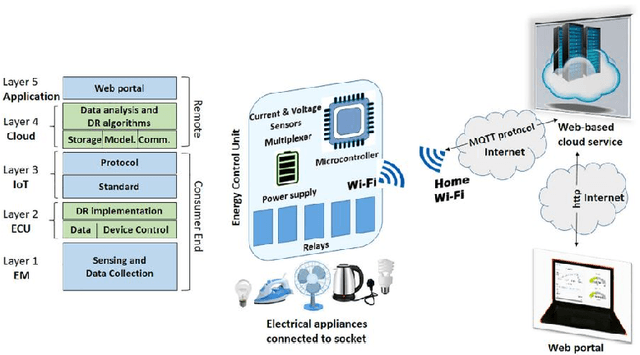
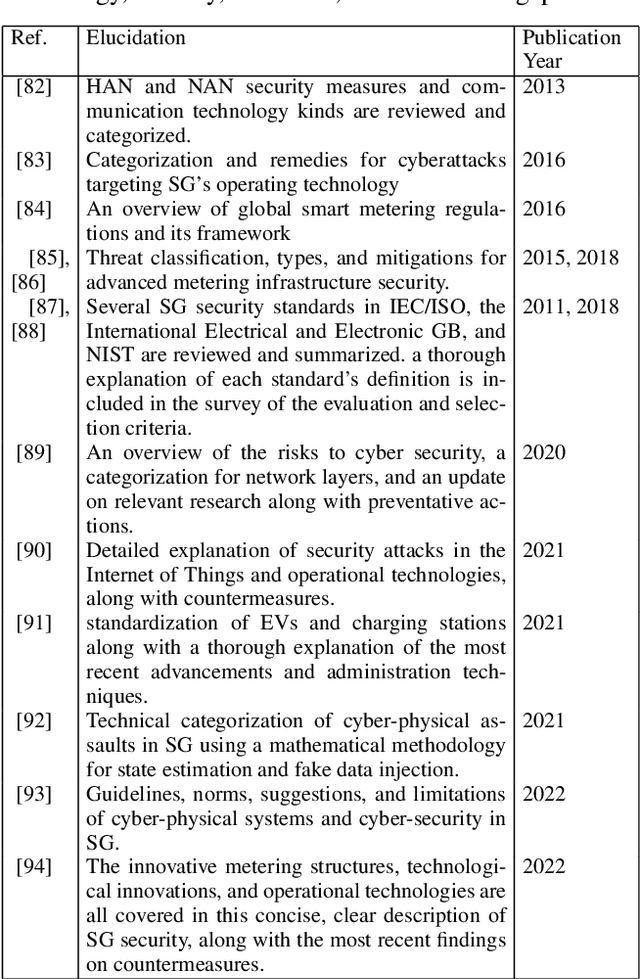
Abstract:Energy management decreases energy expenditures and consumption while simultaneously increasing energy efficiency, reducing carbon emissions, and enhancing operational performance. Smart grids are a type of sophisticated energy infrastructure that increase the generation and distribution of electricity's sustainability, dependability, and efficiency by utilizing digital communication technologies. They combine a number of cutting-edge techniques and technology to improve energy resource management. A large amount of research study on the topic of smart grids for energy management has been completed in the last several years. The authors of the present study want to cover a number of topics, including smart grid benefits and components, technical developments, integrating renewable energy sources, using artificial intelligence and data analytics, cybersecurity, and privacy. Smart Grids for Energy Management are an innovative field of study aiming at tackling various difficulties and magnifying the efficiency, dependability, and sustainability of energy systems, including: 1) Renewable sources of power like solar and wind are intermittent and unpredictable 2) Defending smart grid system from various cyber-attacks 3) Incorporating an increasing number of electric vehicles into the system of power grid without overwhelming it. Additionally, it is proposed to use AI and data analytics for better performance on the grid, reliability, and energy management. It also looks into how AI and data analytics can be used to optimize grid performance, enhance reliability, and improve energy management. The authors will explore these significant challenges and ongoing research. Lastly, significant issues in this field are noted, and recommendations for further work are provided.
Trustworthy XAI and Application
Oct 22, 2024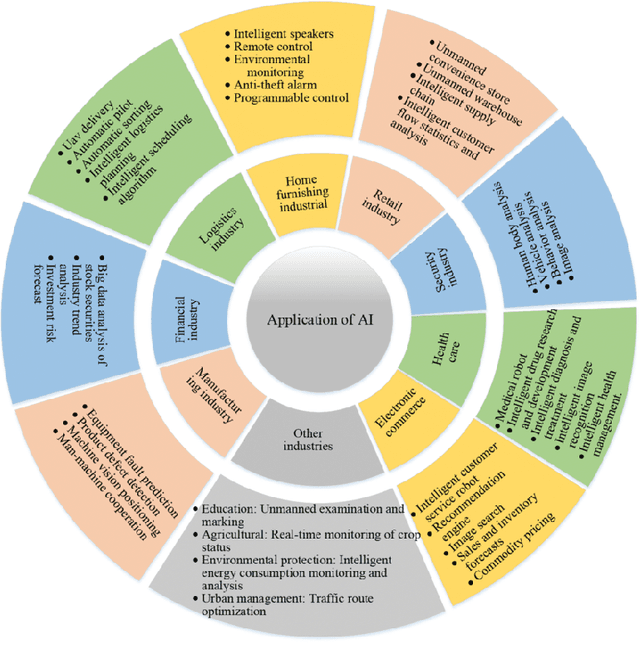

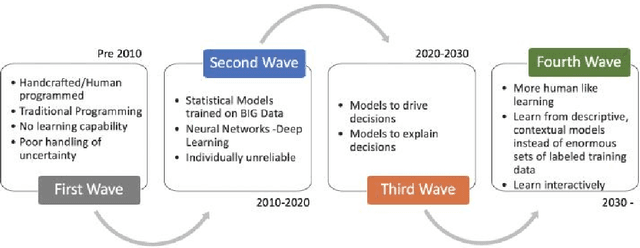
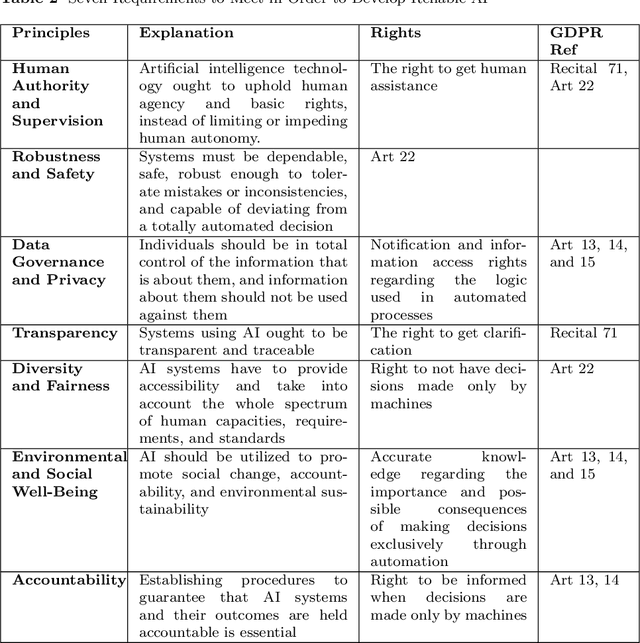
Abstract:One of today's most significant and transformative technologies is the rapidly developing field of artificial intelligence (AI). Deined as a computer system that simulates human cognitive processes, AI is present in many aspects of our daily lives, from the self-driving cars on the road to the intelligence (AI) because some AI systems are so complex and opaque. With millions of parameters and layers, these system-deep neural networks in particular-make it difficult for humans to comprehend accountability, prejudice, and justice are raised by the opaqueness of its decision-making process. AI has a lot of potential, but it also comes with a lot of difficulties and moral dilemmas. In the context of explainable artificial intelligence (XAI), trust is crucial as it ensures that AI systems behave consistently, fairly, and ethically. In the present article, we explore XAI, reliable XAI, and several practical uses for reliable XAI. Once more, we go over the three main components-transparency, explainability, and trustworthiness of XAI-that we determined are pertinent in this situation. We present an overview of recent scientific studies that employ trustworthy XAI in various application fields. In the end, trustworthiness is crucial for establishing and maintaining trust between humans and AI systems, facilitating the integration of AI systems into various applications and domains for the benefit of society.
Securing the Diagnosis of Medical Imaging: An In-depth Analysis of AI-Resistant Attacks
Aug 01, 2024



Abstract:Machine learning (ML) is a rapidly developing area of medicine that uses significant resources to apply computer science and statistics to medical issues. ML's proponents laud its capacity to handle vast, complicated, and erratic medical data. It's common knowledge that attackers might cause misclassification by deliberately creating inputs for machine learning classifiers. Research on adversarial examples has been extensively conducted in the field of computer vision applications. Healthcare systems are thought to be highly difficult because of the security and life-or-death considerations they include, and performance accuracy is very important. Recent arguments have suggested that adversarial attacks could be made against medical image analysis (MedIA) technologies because of the accompanying technology infrastructure and powerful financial incentives. Since the diagnosis will be the basis for important decisions, it is essential to assess how strong medical DNN tasks are against adversarial attacks. Simple adversarial attacks have been taken into account in several earlier studies. However, DNNs are susceptible to more risky and realistic attacks. The present paper covers recent proposed adversarial attack strategies against DNNs for medical imaging as well as countermeasures. In this study, we review current techniques for adversarial imaging attacks, detections. It also encompasses various facets of these techniques and offers suggestions for the robustness of neural networks to be improved in the future.
AI-Driven Approaches for Optimizing Power Consumption: A Comprehensive Survey
Jun 22, 2024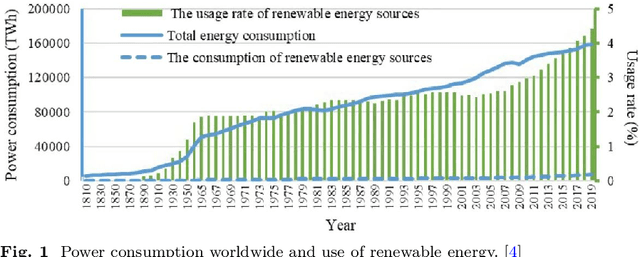
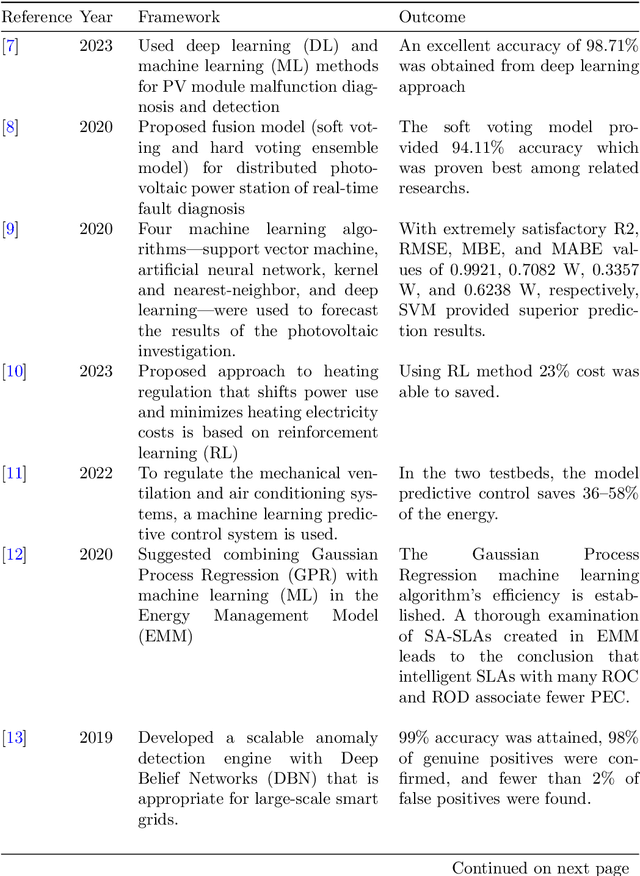
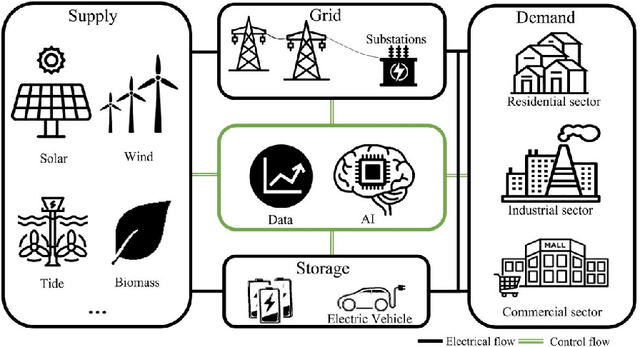
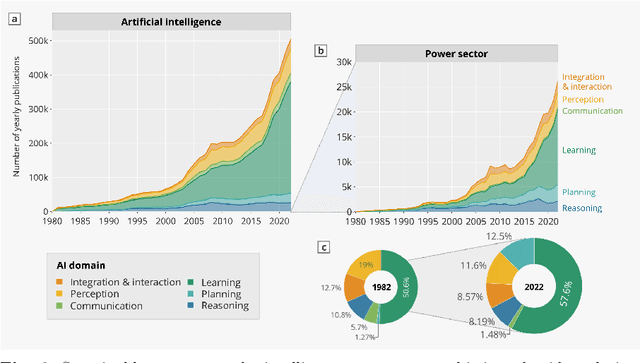
Abstract:Reduced environmental effect, lower operating costs, and a stable and sustainable energy supply for current and future generations are the main reasons why power optimization is important. Power optimization makes ensuring that energy is used more effectively, cutting down on waste and optimizing the utilization of resources.In today's world, power optimization and artificial intelligence (AI) integration are essential to changing the way energy is produced, used, and distributed. Real-time monitoring and analysis of power usage trends is made possible by AI-driven algorithms and predictive analytics, which enable dynamic modifications to effectively satisfy demand. Efficiency and sustainability are increased when power consumption is optimized in different sectors thanks to the use of intelligent systems. This survey paper comprises an extensive review of the several AI techniques used for power optimization as well as a methodical analysis of the literature for the study of various intelligent system application domains across different disciplines of power consumption.This literature review identifies the performance and outcomes of 17 different research methods by assessing them, and it aims to distill valuable insights into their strengths and limitations. Furthermore, this article outlines future directions in the integration of AI for power consumption optimization.
Present and Future of AI in Renewable Energy Domain : A Comprehensive Survey
Jun 22, 2024

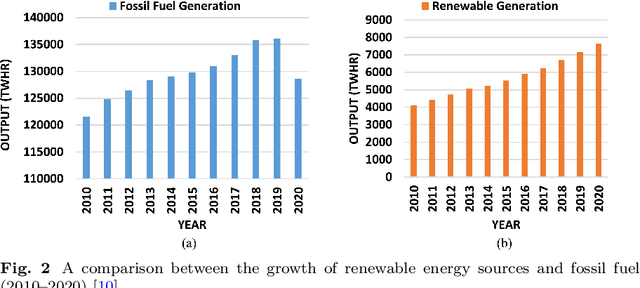

Abstract:Artificial intelligence (AI) has become a crucial instrument for streamlining processes in various industries, including electrical power systems, as a result of recent digitalization. Algorithms for artificial intelligence are data-driven models that are based on statistical learning theory and are used as a tool to take use of the data that the power system and its users generate. Initially, we perform a thorough literature analysis of artificial intelligence (AI) applications related to renewable energy (RE). Next, we present a thorough analysis of renewable energy factories and assess their suitability, along with a list of the most widely used and appropriate AI algorithms. Nine AI-based strategies are identified here to assist Renewable Energy (RE) in contemporary power systems. This survey paper comprises an extensive review of the several AI techniques used for renewable energy as well as a methodical analysis of the literature for the study of various intelligent system application domains across different disciplines of renewable energy. This literature review identifies the performance and outcomes of nine different research methods by assessing them, and it aims to distill valuable insights into their strengths and limitations. This study also addressed three main topics: using AI technology for renewable power generation, utilizing AI for renewable energy forecasting, and optimizing energy systems. Additionally, it explored AI's superiority over conventional models in controllability, data handling, cyberattack prevention, smart grid implementation, robotics- AI's significance in shaping the future of the energy industry. Furthermore, this article outlines future directions in the integration of AI for renewable energy.
Invariant Scattering Transform for Medical Imaging
Jul 07, 2023
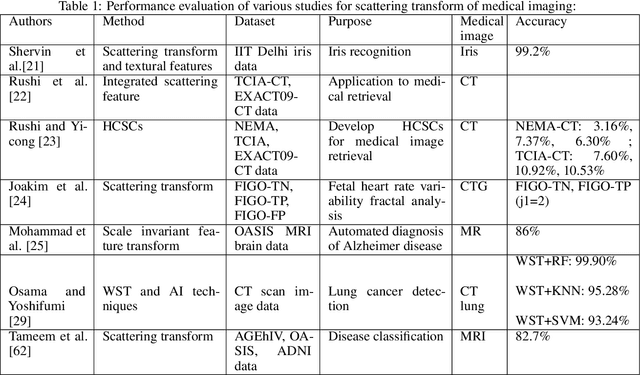
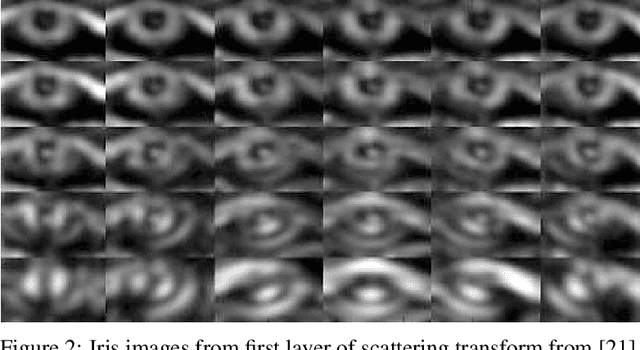
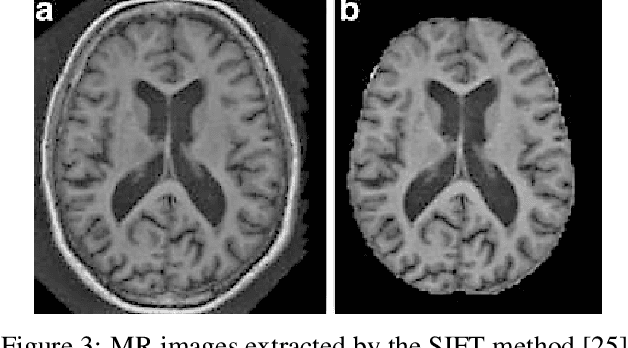
Abstract:Invariant scattering transform introduces new area of research that merges the signal processing with deep learning for computer vision. Nowadays, Deep Learning algorithms are able to solve a variety of problems in medical sector. Medical images are used to detect diseases brain cancer or tumor, Alzheimer's disease, breast cancer, Parkinson's disease and many others. During pandemic back in 2020, machine learning and deep learning has played a critical role to detect COVID-19 which included mutation analysis, prediction, diagnosis and decision making. Medical images like X-ray, MRI known as magnetic resonance imaging, CT scans are used for detecting diseases. There is another method in deep learning for medical imaging which is scattering transform. It builds useful signal representation for image classification. It is a wavelet technique; which is impactful for medical image classification problems. This research article discusses scattering transform as the efficient system for medical image analysis where it's figured by scattering the signal information implemented in a deep convolutional network. A step by step case study is manifested at this research work.
AutoML Systems For Medical Imaging
Jun 17, 2023Abstract:The integration of machine learning in medical image analysis can greatly enhance the quality of healthcare provided by physicians. The combination of human expertise and computerized systems can result in improved diagnostic accuracy. An automated machine learning approach simplifies the creation of custom image recognition models by utilizing neural architecture search and transfer learning techniques. Medical imaging techniques are used to non-invasively create images of internal organs and body parts for diagnostic and procedural purposes. This article aims to highlight the potential applications, strategies, and techniques of AutoML in medical imaging through theoretical and empirical evidence.
Case Studies on X-Ray Imaging, MRI and Nuclear Imaging
Jun 17, 2023

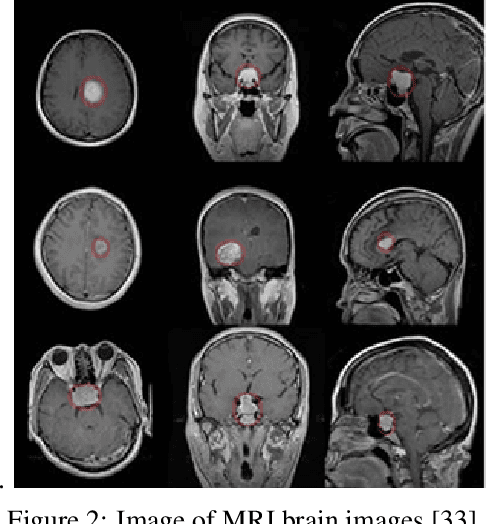

Abstract:The field of medical imaging is an essential aspect of the medical sciences, involving various forms of radiation to capture images of the internal tissues and organs of the body. These images provide vital information for clinical diagnosis, and in this chapter, we will explore the use of X-ray, MRI, and nuclear imaging in detecting severe illnesses. However, manual evaluation and storage of these images can be a challenging and time-consuming process. To address this issue, artificial intelligence (AI)-based techniques, particularly deep learning (DL), have become increasingly popular for systematic feature extraction and classification from imaging modalities, thereby aiding doctors in making rapid and accurate diagnoses. In this review study, we will focus on how AI-based approaches, particularly the use of Convolutional Neural Networks (CNN), can assist in disease detection through medical imaging technology. CNN is a commonly used approach for image analysis due to its ability to extract features from raw input images, and as such, will be the primary area of discussion in this study. Therefore, we have considered CNN as our discussion area in this study to diagnose ailments using medical imaging technology.
Generative Adversarial Networks for Data Augmentation
Jun 07, 2023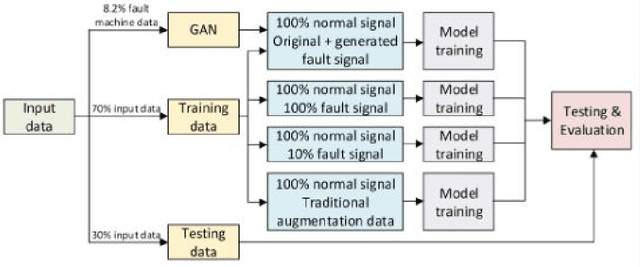
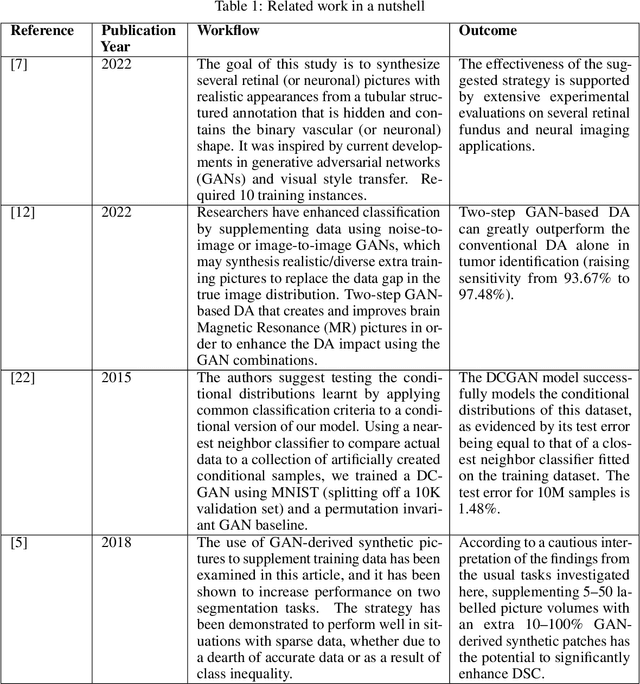
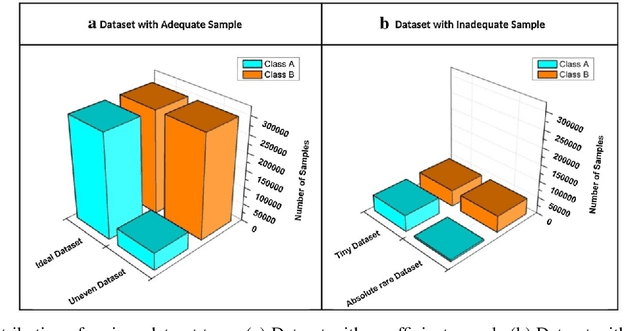
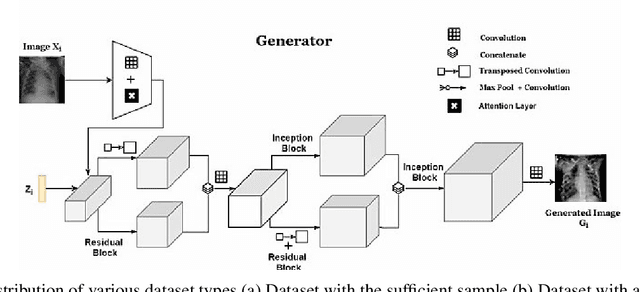
Abstract:One way to expand the available dataset for training AI models in the medical field is through the use of Generative Adversarial Networks (GANs) for data augmentation. GANs work by employing a generator network to create new data samples that are then assessed by a discriminator network to determine their similarity to real samples. The discriminator network is taught to differentiate between actual and synthetic samples, while the generator system is trained to generate data that closely resemble real ones. The process is repeated until the generator network can produce synthetic data that is indistinguishable from genuine data. GANs have been utilized in medical image analysis for various tasks, including data augmentation, image creation, and domain adaptation. They can generate synthetic samples that can be used to increase the available dataset, especially in cases where obtaining large amounts of genuine data is difficult or unethical. However, it is essential to note that the use of GANs in medical imaging is still an active area of research to ensure that the produced images are of high quality and suitable for use in clinical settings.
Active Learning on Medical Image
Jun 07, 2023



Abstract:The development of medical science greatly depends on the increased utilization of machine learning algorithms. By incorporating machine learning, the medical imaging field can significantly improve in terms of the speed and accuracy of the diagnostic process. Computed tomography (CT), magnetic resonance imaging (MRI), X-ray imaging, ultrasound imaging, and positron emission tomography (PET) are the most commonly used types of imaging data in the diagnosis process, and machine learning can aid in detecting diseases at an early stage. However, training machine learning models with limited annotated medical image data poses a challenge. The majority of medical image datasets have limited data, which can impede the pattern-learning process of machine-learning algorithms. Additionally, the lack of labeled data is another critical issue for machine learning. In this context, active learning techniques can be employed to address the challenge of limited annotated medical image data. Active learning involves iteratively selecting the most informative samples from a large pool of unlabeled data for annotation by experts. By actively selecting the most relevant and informative samples, active learning reduces the reliance on large amounts of labeled data and maximizes the model's learning capacity with minimal human labeling effort. By incorporating active learning into the training process, medical imaging machine learning models can make more efficient use of the available labeled data, improving their accuracy and performance. This approach allows medical professionals to focus their efforts on annotating the most critical cases, while the machine learning model actively learns from these annotated samples to improve its diagnostic capabilities.
 Add to Chrome
Add to Chrome Add to Firefox
Add to Firefox Add to Edge
Add to Edge